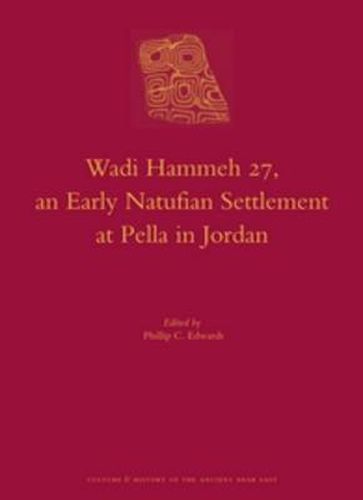Readings Newsletter
Become a Readings Member to make your shopping experience even easier.
Sign in or sign up for free!
You’re not far away from qualifying for FREE standard shipping within Australia
You’ve qualified for FREE standard shipping within Australia
The cart is loading…






Winner of the 2013 American Schools of Oriental Research G. Ernest Wright Award! This award is given to the most substantial volume dealing with archaeological material, excavation reports and material culture from the ancient Near East and eastern Mediterranean.
Wadi Hammeh 27, an Early Natufian Settlement at Pella in Jordan is a detailed report on one of the most important Natufian sites to have emerged in the past thirty years and an integrated analysis and interpretation of subsistence strategies, settlement patterns and ritual life in one of the world’s earliest village communities. The 14,000-year-old settlement of Wadi Hammeh 27 is one of the most spectacular sites of its kind, featuring the largest, most complex pre-Neolithic architectural complex yet discovered in the Middle East, an unparalleled series of artefact caches and activity areas, and a rich corpus of late Ice Age art pieces.
This book is a treasure-trove for researchers specialising in the Natufian period and is a most significant addition to the data base of the Early Natufian in particular. Anna Belfer-Cohen, Hebrew University of Jerusalem
$9.00 standard shipping within Australia
FREE standard shipping within Australia for orders over $100.00
Express & International shipping calculated at checkout
Winner of the 2013 American Schools of Oriental Research G. Ernest Wright Award! This award is given to the most substantial volume dealing with archaeological material, excavation reports and material culture from the ancient Near East and eastern Mediterranean.
Wadi Hammeh 27, an Early Natufian Settlement at Pella in Jordan is a detailed report on one of the most important Natufian sites to have emerged in the past thirty years and an integrated analysis and interpretation of subsistence strategies, settlement patterns and ritual life in one of the world’s earliest village communities. The 14,000-year-old settlement of Wadi Hammeh 27 is one of the most spectacular sites of its kind, featuring the largest, most complex pre-Neolithic architectural complex yet discovered in the Middle East, an unparalleled series of artefact caches and activity areas, and a rich corpus of late Ice Age art pieces.
This book is a treasure-trove for researchers specialising in the Natufian period and is a most significant addition to the data base of the Early Natufian in particular. Anna Belfer-Cohen, Hebrew University of Jerusalem